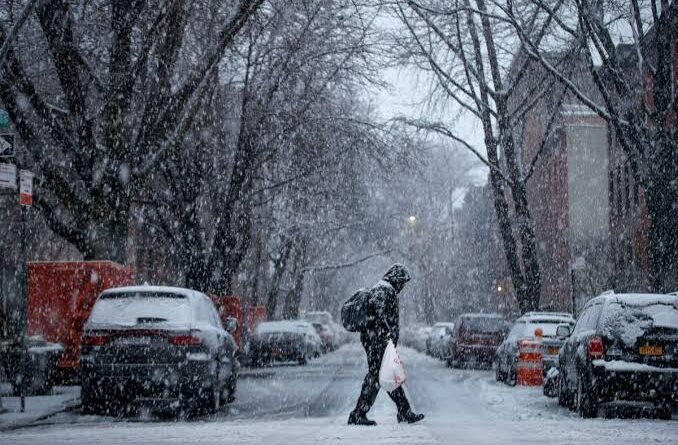winter weather advisory issued for northern minnesota and northwest wisconsin
Introduction
As winter tightens its grip on the Midwest, a winter weather advisory has been issued for Northern Minnesota and Northwest Wisconsin. This advisory warns residents about upcoming hazardous weather conditions that could impact daily life and travel. Understanding the details of this advisory is crucial for staying safe and prepared. This article will delve into the specifics of the advisory, including expected weather patterns, safety precautions, and preparedness tips.
Understanding the Winter Weather Advisory
What is a Winter Weather Advisory?
A winter weather advisory is a notice issued by the National Weather Service (NWS) to inform the public about conditions that could be hazardous but are not severe enough to meet the criteria of a winter storm warning. These advisories are meant to alert residents to potential dangers, encouraging them to take necessary precautions.
Why is it Issued?
The advisory is issued when periods of snow, sleet, or freezing rain are expected to cause significant inconveniences and may pose moderate hazards to travelers and those spending time outdoors.
Current Advisory Details
The latest winter weather advisory for Northern Minnesota and Northwest Wisconsin includes forecasts of snowfall, potential ice accumulation, and strong winds. This combination of elements can lead to slippery roads and reduced visibility, making travel dangerous.
Expected Weather Conditions
Snowfall Predictions
Meteorologists predict that these regions could see several inches of snow, with heavier accumulations possible in localized areas. Snowfall rates could vary, leading to different impacts across the advisory area.
Ice Accumulation
Along with snow, there is a potential for ice accumulation due to freezing rain. Even a small amount of ice can create hazardous conditions, particularly on untreated roads and sidewalks.
Wind Conditions
Strong winds accompanying the snowfall can lead to blowing snow, which reduces visibility and increases the risk of accidents. Wind chills may also drop significantly, making exposure to the cold more dangerous.
Impacts on Daily Life
Travel Disruptions
The combination of snow, ice, and wind can lead to significant travel disruptions. Roads may become slick and dangerous, prompting officials to advise against unnecessary travel.
School and Business Closures
Schools and businesses in the affected areas may close or adjust their schedules to ensure the safety of students, employees, and customers.
Power Outages
Ice accumulation on power lines and tree limbs can lead to outages. Residents should be prepared for the possibility of losing electricity during the advisory period.
Staying Safe During the Advisory
Travel Safety Tips
- Avoid Non-Essential Travel: If possible, stay off the roads to avoid accidents and allow snowplows and emergency vehicles to do their jobs.
- Drive Cautiously: If you must travel, drive slowly and keep a safe distance from other vehicles. Ensure your car is equipped with winter tires and has an emergency kit.
- Stay Informed: Keep up with the latest weather updates and road conditions through reliable sources such as the NWS and local news outlets.
Home Preparedness Tips
- Stock Up on Essentials: Ensure you have enough food, water, and medication to last through the advisory period.
- Prepare for Power Outages: Have flashlights, batteries, and a battery-powered radio on hand. Consider alternative heating options, such as a generator or a wood-burning stove.
- Insulate Your Home: Check that windows and doors are properly sealed to keep the cold air out and the heat in.
Personal Safety Tips
- Dress Warmly: Wear layers of clothing to stay warm, and make sure to cover exposed skin to prevent frostbite.
- Limit Time Outdoors: Reduce your time outside to avoid prolonged exposure to the cold. If you must go outside, take frequent breaks to warm up indoors.
- Check on Neighbors: Especially check on the elderly and those with health conditions to ensure they are safe and have the supplies they need.
Preparing for the Next Winter Weather Event
Emergency Kits
- Car Kit: Include items such as blankets, a first-aid kit, a shovel, sand or kitty litter for traction, and non-perishable snacks.
- Home Kit: Stock up on water, non-perishable food, medications, a flashlight, batteries, and a portable phone charger.
Communication Plan
Establish a communication plan with family members and friends. Ensure everyone knows how to contact each other in case of emergencies and designate a meeting place if you become separated.
Stay Informed
Keep a close watch on weather reports and updates from the National Weather Service. Sign up for local alerts to receive real-time information about weather conditions and advisories.
FAQs
What areas are covered by the current winter weather advisory?
The advisory covers Northern Minnesota and Northwest Wisconsin, specifically regions expected to experience significant snowfall, ice accumulation, and strong winds.
How long will the advisory be in effect?
The duration of the advisory can vary, but it typically lasts until the hazardous conditions have passed. Check the latest updates from the National Weather Service for specific timelines.
What should I do if I lose power during the advisory?
If you lose power, use alternative heating sources safely, avoid opening the refrigerator to keep food cold longer, and check for updates from your power company. Have an emergency kit ready with essential supplies.
Can I still travel during the advisory?
Travel is not recommended unless necessary. If you must travel, drive cautiously, keep an emergency kit in your car, and stay informed about road conditions and weather updates.
What are the signs of frostbite and hypothermia?
Frostbite signs include numbness, white or grayish-yellow skin, and skin that feels unusually firm or waxy. Hypothermia signs include shivering, confusion, fumbling hands, memory loss, slurred speech, and drowsiness. Seek medical help immediately if you notice these symptoms.
How can I help my community during the advisory?
Check on neighbors, particularly the elderly and those with health conditions. Offer to help with shoveling snow or provide supplies if needed. Stay informed and share reliable information with others.
Conclusion
A winter weather advisory for Northern Minnesota and Northwest Wisconsin brings potential hazards that residents must take seriously. By understanding the advisory details, staying informed, and following safety tips, you can protect yourself, your family, and your community during this challenging weather period. Prepare now to ensure you stay safe and resilient in the face of winter’s harsh conditions.



